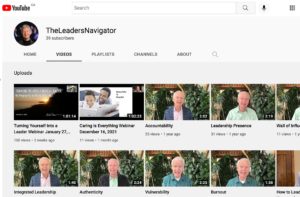Five Ways to Make Others Feel Valued – THE BIG VALUE OF SMALL
According to the Greek storyteller Aesop, a little mouse ran up and down a sleeping lion who awoke, grabbed the poor helpless rodent and opened his big jaws to swallow him.
“Pardon, O King,” cried the little mouse, “Please forgive me. I promise never to climb on you again. And if you let me go, who knows what I may be able to do for you some day.”
The lion was so intrigued by the idea of a mouse being able to help him that he lifted up his paw and let the critter go. Some time later, the lion was caught in a trap, and the hunters tied him to a tree while they went in search of a wagon to transport him to the king. Just then the little Mouse happened to pass by, and seeing the lion’s sad plight, quickly jumped at the opportunity to help him. He gnawed away the ropes, setting the lion free.
We live in a society that values big. Big profits. Big paycheques. Big companies. Big titles. Big fame. Big offices. In this world of big it’s easy to get the crazy idea that you aren’t valuable if you are small, or perceive yourself to be small. But Aesop’s little tale of the lion and the mouse teaches a wise lesson. The tiny mouse is every bit as valuable as the lion. According to Aesop, importance is not based on size, but rather on the value you bring to others. It’s a simple matter of changing the context. The person who brings the most value is the most valuable.
One of my clients is a manager of employees who run the fitness centers, indoor tracks, pools, courts, and arenas at a university. They drive the Zambonis, keep the pools clean and look after students when they come to work out or play in the facilities. And, in an institution where the academic mandate is the highest priority, these employees don’t feel valued.
Who’s to say that those who provide for the health of a student and the health of the community in which that student lives are any less valuable than the professors who hand out the grades and grant the degrees? Without a healthy, well-rounded student, the degree doesn’t mean much. And without a great student experience, they are going to find other universities. Everyone is unique, and everyone has value. Everyone makes a contribution. And each person’s unique contribution is vitally important.
Value isn’t measured by the size of your office, the size of your paycheque, or the size of your business. Value is measured by your contribution to others. How do you make people around you feel valued? Here are five simple strategies.
- Believe in yourself.In order to believe in others, you have to believe in yourself. Henry Ford once said, “Whether you believe you can or you believe you can’t, you are right.” Everyone is talented, unique, and has something to offer. If you don’t believe that applies to you, then start hanging around people that do believe it and soon it will start sinking in.
- Get moving. Don’t wait to be appreciated or valued. My dad used to tell me that waiting is not a very good strategy. Instead of waiting, bring to others whatever you expect from others. Instead of waiting to be seen as being valuable, bring more value, every day, to the people in your life. If you want to be appreciated, get so busy appreciating others that you don’t have time to feel sorry for yourself.
- Stop to recognize beauty. Don’t take people for granted – especially your best people. We’re all busy. Like beauty, you don’t see the value others bring when you’re in a hurry. Slow down. The best way to recognize value is to stop and listen to what people have to say. Listen for their opinions. Listen for their input. Listen for their wisdom. Stop every so often to recognize the beauty and the value in the people around you. Express appreciation. You never know when you may be in need of their unique talents.
- Create space. Just as you have to recognize the value of others, you also have to pay attention to people or projects that aren’t adding value to your life or your business. When people or projects are sucking the energy out of you or your organization, it might be time to let go and move on.
- Choose quality over quantity. Don’t strive to be the biggest. Instead, strive to be the best. Don’t confuse the concept of doing big things with doing greatthings. It’s not about making the news; it’s about making a difference. Bigger is not the objective. Bigger is a side effect when you are committed to bring value instead of size to whatever you do.
When it comes to bringing value to others, the little things are the big things.


